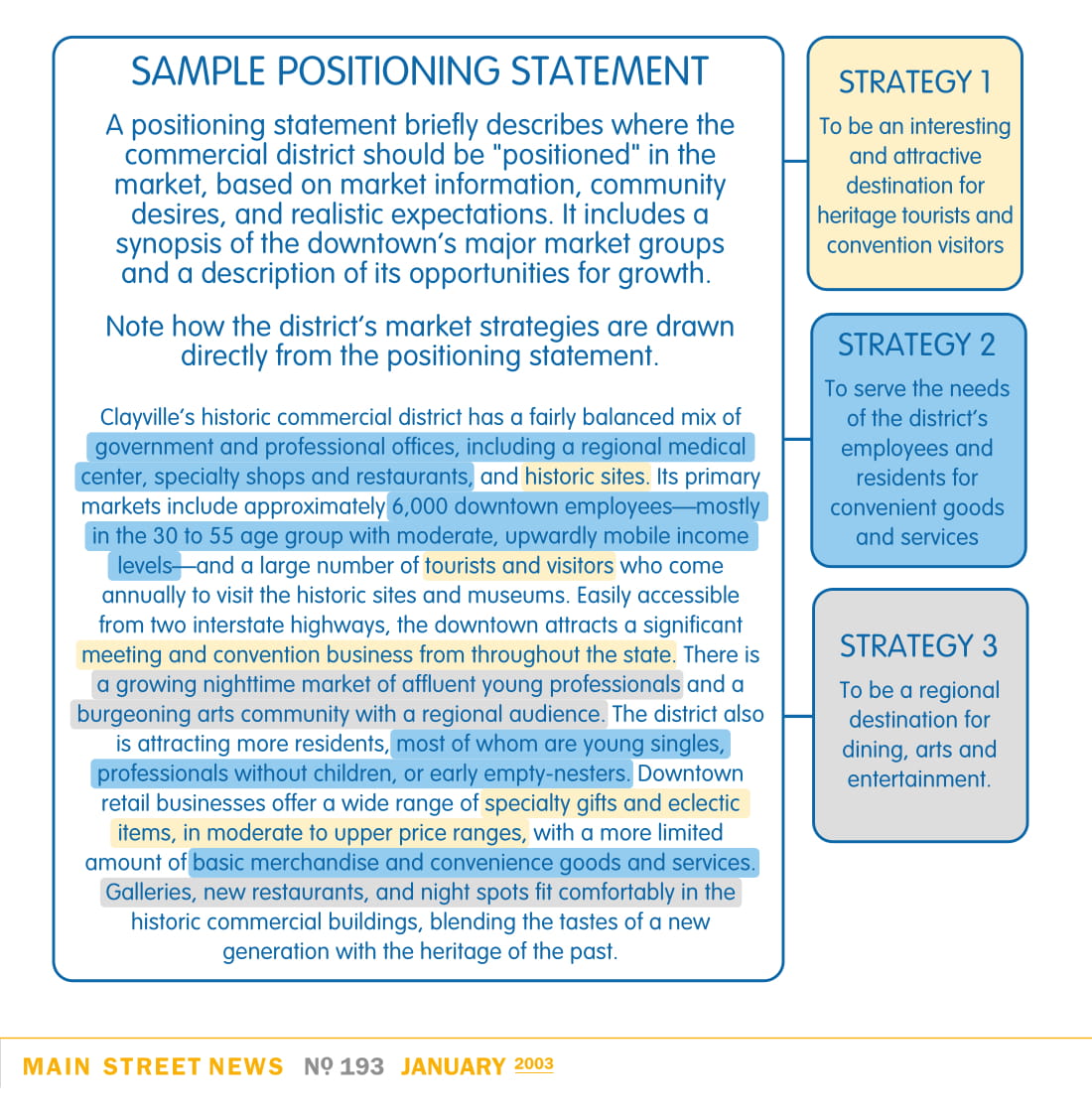Writing a Positioning Statement – Examples, Format, PDF, Tips
Penetrating an already established market is one of the biggest struggles for any startup business. Startups have to secure a spot in the market and compete with big and developed companies just so they can continue their business and thrive. Although this struggle is more prominent to startup businesses, even established businesses go through this difficulty whenever they venture outside their specific target market. You may also see Statement Examples.
Market position is the consumers’ perception of a brand in relation to its competitors. Meaning, it is how the consumers view a certain product compared to its competition. For example, almost 50% of the target population of Brand X think that it is more cheaper compared to Brand Y. In the consumers’ point of view, Brand X’s position is a cheaper alternative to Brand Y. You may also see Strategy Statement Examples.
On the other hand, market positioning is the process in which the brand establishes its identity or image so that consumers’ view them in a certain way. For example, a fast food chain may position itself as a provider of cheap and instant meals or a car manufacturer may position itself as a maker of high end, luxury vehicles, and so on. You may also see Copyright Statement Example.
What is a Positioning Statement?
A positioning statement expresses how a company defines its business or how a brand identifies itself. In other words, it is a written expression that distinguishes a brand from its competitors. It articulates how the company or brand satisfies a particular need of the consumers in ways that competitors can’t.
For some companies, it sets the direction of the strategies used to plan the business that is why it is directly related the marketing strategies of the company. It not only takes into account the unique features of the product or service, it also takes into consideration the way consumers perceive the business itself. Its main purpose is to guide the business’ marketing, production, and operational decisions and keep it on track.
For example, Amazon.com’s positioning statement when it was still almost exclusively selling books in 2001,
“For World Wide Web users who enjoy books, Amazon.com is a retail bookseller that provides instant access to over 1.1 million books. Unlike traditional book retailers, Amazon.com provides a combination of extraordinary convenience, low prices, and comprehensive selection.”
When Zipcar.com was established in 2000, they used this positioning statement:
“To urban-dwelling, educated techno-savvy consumers, when you use Zipcar car-sharing service instead of owning a car, you save money while reducing your carbon footprint.”
However, a positioning statement is internal. It drives your business’ strategies and gives direction as to the path where the business’ should venture. It is not externally facing; it is for internal alignment only. You may also see Business Statement Example.
Notice in the definition of both market position and positioning, it emphasizes on the perception of the consumers, meaning how you relay or translate your business to your consumers. The statement that translates the positioning statement to your consumers and helps them form their own perception of your business is called a tagline. The tagline is consumer-facing or externally facing– it is a catchy and memorable statement of the brand that states both its benefit and personality. You may also see Work Statement Examples.
A perfect example is Nike’s commonly quoted tagline, “Just do it,” Apple’s “Think different”, McDonald’s “I’m lovin’ it” and last but definitely not the least, Harley-Davidson’s “American by birth. Rebel by choice.”

Positioning Statements vs Mission Statements
Definition
1. Positioning Statement – is the description of the company’s objectives for a specific strategy. It helps set the business apart from its competition. It also sets the direction of the business, it’s branding and marketing strategies. It is usually one or two sentences long and clearly captures the benefits the product or brand delivers.
2. Mission Statement – describes the company’s functions, market and competitive advantage. It includes the smart goals and philosophies behind the business. Aside from that, it also defines and explains the purpose and motivation to provide products and/or services. It relays the core values and life goals of the business to its employees in order to help make better decisions and choices.
Similarities
- Both statements are directly related to the company’s purpose.
- They are generally written in one or two sentences.
- Both are important elements of business documents such as business plans and strategies.
- Both help guide the direction of the business.
Differences
- The positioning statement is mostly an element of the marketing plan while the mission statement is a component of the company’s definition as a whole.
- Positioning statement focuses on how the consumers perceive the company and the benefits they can get from the company. A mission statement, on the other hand, is focused on the core purpose of the company; it is directed towards the employees of the company in order for them to understand their role and purpose in the company.
- Positioning statement tries to sell the features of products and/or services of the company against its competitor. The mission statement does not mention anything about the competition and focuses on the reasons why the company exists.
- A positioning statement is not consumer-facing as it is not relayed to the consumers verbatim, however, the significant elements of the positioning statement is relayed through marketing strategies and branding. The mission statement meanwhile needs to relayed easily, accurately and precisely to all employees, it is communicated using the exact words.
Your Positioning Statement Isn’t
- An elevator pitch – Your positioning statement can be a basis for your elevator pitch, however, it isn’t an elevator speech. Its purpose is not to persuade your consumers to take a chance on you, it is for internal encouragement and direction.
- A tagline – Your tagline is based on your positioning statement and not the other way around. It translates the internal PS to the consumer; it’s an external translation of the positioning statement.
- Externally facing – As mentioned above, your positioning statement is internal. It is only for internal alignment of strategies, processes, and operations. Although it has something to do with the consumers, it simply directs the employees how to provide product and/or services and is not directed to them.
- Created in a vacuum – The process of crafting the positioning statement needs an open discussion with stakeholders, employees, and costumers. Do not assume that the ideas and opinions of everyone are not valid in creating an effective positioning statement; it should be an outcome of a team effort. Before anything else, you need to conduct thorough research about your competitors.

How to Create a Positioning Statement
There are four elements for a successful positioning statement:
1. Target Customer
This is where you determine the true attributes of your consumers. You include the demographic information of your consumers such as job title, gender, education level, salary, marital status, annual income, etc. You may also include the business goals, values, ambitions of your consumers. Through this, you will be able to classify your target costumers and you’ll know who your costumes are and what group they belong. However, you don’t need to include all of this information in your positioning statement, it is just a way to identify your target costumers.
Answer this question: What is the summary of the character and demographic description of the target customers your brand wants to approach and attract?

2. Market Definition
What category does your brand compete in and what way do your costumes relate to your brand?
Identify the industry or category your brand operates on. You also have to determine the aspects or context in which you provide for your consumers. Explain how your brand can be of use for the consumers, how you can fill their needs, etc.
3. Brand Promise
Explain how your consumers can benefit from your company, and specify what benefits they can get from you. Determine what make you different and more satisfactory to your consumers against your competitors. Since you won’t be the sole provider of the products and/or services, separate yourself from your competitors’ narrative and make your business stand out; present specific ways that make you better than your competitors. You may also see Legal Statement.
What is the most meaningful– be it emotional or rational, benefit your target customers can get from you and not from your competition?
4. Reason to Believe
Presenting the specific ways you deliver your products and/or services to your consumers. Give relatable and easily understandable specifics on what makes you fulfill your promise and convince your consumers to invest or purchase from your business. You may also see Objective Statement.
Positioning Statement Example
To test your skills in creating a positioning statement, here is an easy worksheet for you:
Tips in Creating a Better Positioning Statement
- Be more specific about what you do.
- Be as specific as you can in describing your business. Don’t conform to the general terms, really think about what makes you different from your competition. For example, don’t just say “We’re a car manufacturer,” instead use ” We’re a luxury car manufacturer.” State specifics so you can attract your target market easier. You may also see statement Examples in Word.
- Really define your customer.
- Remember that the more general you are, the more unmemorable you become. If you constantly use general terms, you might drown in the sea of your competitors. Do not use “We’re a car manufacturer for the people,” instead go for your specific target, “We’re a car manufacturer for the rich and ambitious.”
- Avoid fluff.
- Briefly explain the process involved in producing or providing your products and/or services. What makes you more efficient and better than your competition? How do you make your consumers live better?
- Explain the benefit better.
- Since you and your competitors advertise your products and services almost the same way, so directly relate your benefits to your target consumer. You and your competitors offer luxury cars for the wealthy people, tie your positioning statement to your target consumers, in relation to the example, the millionaire’s club. You may also see Financial Statement Examples.
- Embody your personality.
- Add a bit of reflection of you and your team. Your positioning statement can be the embodiment of the disposition of the whole company. For example, if your company are serious and committed, your positioning statement should also be serious and committed.
- Embrace your ideal audience.
- As said before, the more general, the more unmemorable. If you embrace a broader scope of your target consumer you might find it hard to fulfill your promises. A good quality positioning statement itself will find you your specific clients and you won’t turn down people who don’t fit your message.
Conclusion
A positioning statement helps establish a clear and beneficial relationship between the company and its target consumers. It explains the specific objectives and how the company or brand defines itself from its competitors. The positioning statement allows the company to have a sense of direction in how to present itself to consumers.
The positioning statement also helps shape the marketing strategies of the company. It helps the marketing team come up with a catchy tagline since should be based on the positioning statement. Aside from that, it is the defining characteristics the consumers will see the company for rest of its existence.


